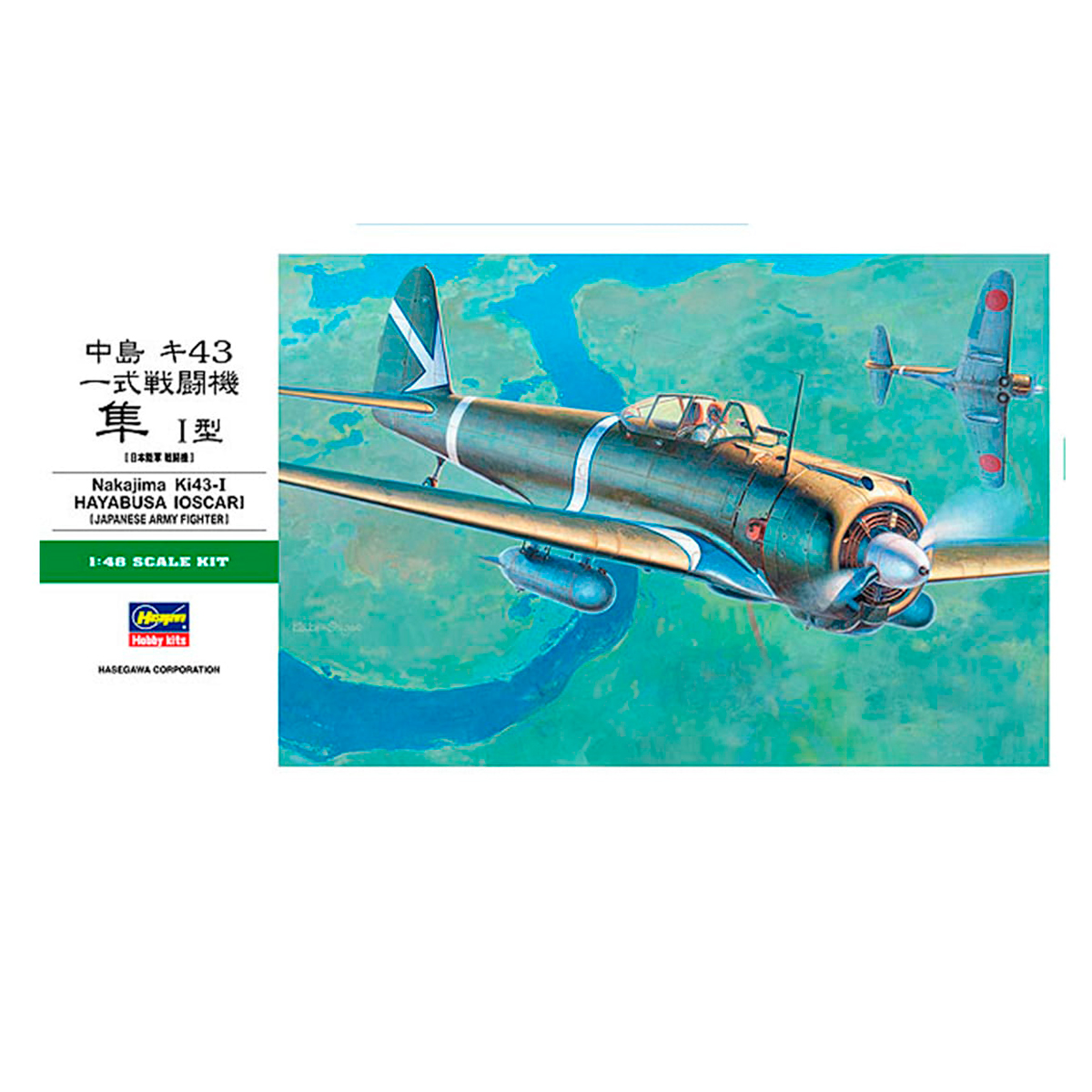JT80 – 1/48 NAKAJIMA Ki43-I HAYABUSA (OSCAR)
24,95€
In stock

*Please check our Privacy Policies to see how to we use your personal data.
*Por favor revisa nuestra Política de Privacidad para ver como tratamos tus datos personales
Scale … 1:48
Part number ……… JT80
In December 1945, when the Nakajima Ki-27 fighter was officially adopted, the Army issued an instruction to one Nakajima company to make a prototype of the next fighter (Ki 43).
The first prototype was completed in December of the following year, and as a result of a test flight, the maximum speed was about 30km / h higher than that of the Type 97 fighter, but the mobility was inferior and the power was insufficient for the next fighter.
After that, various repairs such as changing the wing area and replacing the engine were carried out, and 13 aircraft (3 prototypes, 10 increased prototypes) were completed by September 1945, but the army of fighting supreme principle was established. I couldn’t convince you.
However, at that time, the General Staff Headquarters thought that a fighter with a large cruising power to support the fleet was necessary to capture Singapore in the southern invasion operation, and as a long-range fighter on the verge of being labeled as rejected. A way of life was found.
In April 1945, the refurbished aircraft was tested and the required cruising power was obtained, and the fighting battle was also excellent in the vertical aspect, so it was decided to adopt it as a set fighter in May
1945, and from June of the same year 8 Over the course of the month, the 59th Flight Squadron received about 30 Type I aircraft.
The Hayabusa I type was mainly introduced in the direction of Burma and contributed greatly to the rapid advance of the beginning of the war.
The set fighter type II is a type that replaces the engine with Ha 115, refines the aircraft design, and improves various performances, and when the type
II is deployed in actual battle , it fought superiorly against buffalo, hurricane, P-40, etc. However, I was forced to struggle with the later Spitfire, P-38, etc.
However, it was the easiest army fighter to handle at that time and had a high operating rate, so mass production continued until the end of the war.
《Data》
Crew: 1 person
Overall width: 11.437m Overall
length: 8.832m (horizontal posture)
Overall height: 3.27m (horizontal attitude)
Total weight: 2,048kg
Engine: Nakajima Ha 25
Lifting output: 990hp
Cruising distance: 1,200km
Maximum speed: 495km / h / 4,000m
Armed: Type I Instep … 7.7mm Machine Gun x 2, Type I B … 12.7mm Machine Gun x 1, 7.7mm Machine Gun x 1, Type I 丙 … 12.7mm Machine Gun x 2
Escala … 1:48
Número de pieza ……… JT80
En diciembre de 1945, cuando se adoptó oficialmente el caza Nakajima Ki-27, el Ejército emitió una instrucción a una compañía de Nakajima para que hiciera un prototipo del próximo caza (Ki 43).
El primer prototipo se completó en diciembre del año siguiente y, como resultado de un vuelo de prueba, la velocidad máxima era unos 30 km / h más alta que la del caza Tipo 97, pero la movilidad era inferior y la potencia insuficiente para el próximo luchador.
Después de eso, se llevaron a cabo varias reparaciones, como cambiar el área del ala y reemplazar el motor, y se completaron 13 aviones (3 prototipos, 10 prototipos aumentados) en septiembre de 1945, pero se estableció el principio supremo del ejército de combate. No pude convencerte.
Sin embargo, en ese momento, el Cuartel General del Estado Mayor pensó que un caza con un gran poder de crucero para apoyar a la flota era necesario para capturar Singapur en la operación de invasión del sur, y como un caza de largo alcance al borde de ser etiquetado como rechazado. Se encontró una forma de vida.
En abril de 1945 se probó la aeronave reacondicionada y se obtuvo la potencia de crucero requerida, y la batalla de combate también fue excelente en el aspecto vertical, por lo que se decidió adoptarla como caza de plató en mayo.
1945, y desde junio del mismo año 8 En el transcurso del mes, el 59º Escuadrón de Vuelo recibió alrededor de 30 aviones Tipo I.
El tipo Hayabusa I se introdujo principalmente en la dirección de Birmania y contribuyó en gran medida al rápido avance del comienzo de la guerra.
El set fighter type II es un tipo que reemplaza el motor con Ha 115, refina el diseño de la aeronave y mejora varios rendimientos, y cuando el tipo
II se despliega en una batalla real, luchó superiormente contra búfalos, huracanes, P-40, etc. Sin embargo, me vi obligado a luchar con el posterior Spitfire, P-38, etc.
Sin embargo, era el caza del ejército más fácil de manejar en ese momento y tenía una alta tasa de operación, por lo que la producción en masa continuó hasta el final de la guerra.
《Datos》
Tripulación: 1 persona
Ancho total: 11,437 m en total
longitud: 8.832 m (postura horizontal)
Altura total: 3,27 m (posición horizontal)
Peso total: 2.048 kg
Motor: Nakajima Ha 25
Potencia de elevación: 990 CV
Distancia de crucero: 1200 km
Velocidad máxima: 495 km / h / 4.000 m
Armado: Empeine tipo I … Ametralladora de 7,7 mm x 2, Tipo I B … Ametralladora de 12,7 mm x 1, Ametralladora de 7,7 mm x 1, Tipo I 丙 … Ametralladora de 12,7 mm x 2





 Request of SDS product data file / Product security
Request of SDS product data file / Product security